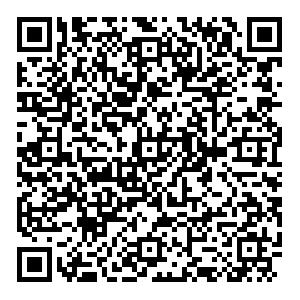|
[1]
|
崔允漷, 邵朝友. (2017). 试论核心素养的课程意义. 全球教育展望,46(10),24−33. doi: 10.3969/j.issn.1009-9670.2017.10.003
|
|
[2]
|
杜威. (2004). 我们怎样思维(姜文闵译). 北京: 人民教育出版社.
|
|
[3]
|
杜威. (2012). 民主与教育(俞吾金, 孔慧译). 上海: 华东师范大学出版社.
|
|
[4]
|
核心素养研究课题组. (2016). 中国学生发展核心素养. 中国教育学刊,10,1−3.
|
|
[5]
|
马斯·德里斯科尔. (2004). 学习心理学(王小明等译). 上海: 华东师范大学出版社.
|
|
[6]
|
杨向东. (2017). 基于核心素养的基础教育课程标准研制. 全球教育展望,46(10),34−48. doi: 10.3969/j.issn.1009-9670.2017.10.004
|
|
[7]
|
杨向东. (2018). 以科学探究为例看素养与知识的关系. 基础教育课程,191(2),19−23.
|
|
[8]
|
Ertmer, P. A., & Newby, T. J. (2004). 行为主义、认知主义和建构主义(下)——从教学设计的视角比较其关键特征(盛群力译). 电化教育研究, 132(4), 27−31.
|
|
[9]
|
Amabile, T. M. (1996). Creativity in context. Boulder, CO: Westview Press.
|
|
[10]
|
Barron, F., & Harrington, D. M. (1981). Creativity, intelligence and personality. Annual Review of Psychology, 32(1), 439−476. doi: 10.1146/annurev.ps.32.020181.002255
|
|
[11]
|
Bloom, B. S., & Krathwohl, D. R. (1956). Taxonomy of Educational Objectives: The Classification of Educational Goals, by a committee of college and university examiners. Handbook I: Cognitive domain. New York, NY: Longmans, Green.
|
|
[12]
|
Brown, J. S., Collins, A., & Guguid, P. (1989). Situated cognition and the culture of learning. Educational Researcher, 18(1), 32−42. doi: 10.3102/0013189X018001032
|
|
[13]
|
Byrnes, J. P., & Dunbar, K. N. (2014). The nature and development of critical-analytic thinking. Educational Psychology Review, 26(4), 477−493. doi: 10.1007/s10648-014-9284-0
|
|
[14]
|
Chiappe, D., & MacDonald, K. (2005). The Evolution of Domain-General Mechanisms in Intelligence and Learning. The Journal of General Psychology, 132(1), 5−40. doi: 10.3200/GENP.132.1.5-40
|
|
[15]
|
Chomsky, N. (1957). Syntactic structures. The Hague, NE: Mouton.
|
|
[16]
|
Davies, M. (2013). Critical thinking and the disciplines reconsidered. Higher Education Research & Development, 32(4), 529−544.
|
|
[17]
|
Delamare le Deist, F., & Winterton, J. (2005). What is competence?. Human Resource Development International, 8(1), 27−46. doi: 10.1080/1367886042000338227
|
|
[18]
|
Elkin, G. (1990). Competency-based human resource development. Industrial and Commercial Training, 22(4), 20−25.
|
|
[19]
|
Ennis, R. H. (1989). Critical thinking and subject specificity: Clarification and needed research. Educational Researcher, 18(3), 4−10. doi: 10.3102/0013189X018003004
|
|
[20]
|
Ennis, R. H. (1993). Critical thinking assessment. Theory into Practice, 32(3), 179−186. doi: 10.1080/00405849309543594
|
|
[21]
|
Epstein, S. (1973). The self-concept revisited or a theory of a theory. American Psychologist, 28(5), 401−416.
|
|
[22]
|
European Commission. Audiovisual and Culture Executive Agency and Eurydice (2012). Developing key competences at school in Europe: challenges and opportunities for policy [online]. Available: http://eacea.ec.europa.eu/education/eurydice/documents/thematic_reports/145EN.pdf.
|
|
[23]
|
Facione, P. A. (1990). Critical Thinking: A Statement of Expert Consensus for Purposes of Educational Assessment and Instruction. Research Findings and Recommendations. Eric Document Reproduction Service.
|
|
[24]
|
Feist, G. J. (1998). A meta-analysis of personality in scientific and artistic creativity. Personality and Social Psychology, 2(4), 290−309. doi: 10.1207/s15327957pspr0204_5
|
|
[25]
|
Gallagher, S. A. (2015). The role of problem-based learning in developing creative expertise. Asia Pacific Educational Review, 16(2), 225−235. doi: 10.1007/s12564-015-9367-8
|
|
[26]
|
Glaser, E. (1941). An experiment in the development of critical thinking. New York, NY: Teachers College, Columbia University.
|
|
[27]
|
Glaser, R. (1984). Education and thinking: the role of knowledge. American Psychologist, 39(2), 93−104. doi: 10.1037/0003-066X.39.2.93
|
|
[28]
|
Griffin, P., McGaw, B., & Care, E. (2012). Assessment and teaching of 21st century skills. Dordrecht, NE: Springer.
|
|
[29]
|
Guilford, J. P. (1950). Creativity. American Psychologist, 5(9), 444−454. doi: 10.1037/h0063487
|
|
[30]
|
Halpern, D. F. (1998). Teaching critical thinking for transfer across domains. American Psychologist, 53(4), 449−455. doi: 10.1037/0003-066X.53.4.449
|
|
[31]
|
Hassebrock, F., & Prietula, M. J. (1992). A protocol-based coding scheme for the analysis of medical reasoning. International Journal of Man-Machine Studies, 37(5), 613−652. doi: 10.1016/0020-7373(92)90026-H
|
|
[32]
|
Hoffman, T. (1999). The meaning of competency. Journal of European Industrial Training, 23(6), 275−285. doi: 10.1108/03090599910284650
|
|
[33]
|
Hoskins, B., & Crick, R. D. (2010). Competences for learning to learn and active citizenship: different currencies or two sides of the same coin?. European Journal of Education, 45(1), 121−137. doi: 10.1111/j.1465-3435.2009.01419.x
|
|
[34]
|
Klieme, E. et al., (2004). The development of national educational standard: An expertise. Federal Ministry of Education and Research (BMBF), Publication and website Division, D-11055 Berlin, German. Retrieved Nov 20, 2009 from http://www.bmbf.de.
|
|
[35]
|
Kruse, J., & Presseisen, B. Z. (1987). A catalog of programs for teaching thinking. Philadelphia: Research for Better Schools.
|
|
[36]
|
Kuhn, D. (1991). The skills of argument. Cambridge, MA: Cambridge University Press.
|
|
[37]
|
Kuhn, D. (1999). A developmental model of critical thinking. Educational Researcher, 28(2), 16−25. doi: 10.3102/0013189X028002016
|
|
[38]
|
Lawson, A. E., & Hegebush, W. (1985). A survey of causal hypothesis testing strategies: K-12. American Biology Teacher, 47(6), 348−355. doi: 10.2307/4448082
|
|
[39]
|
Lerner, B. (1981). The minimum competence testing movement: social, scientific and legal implications. American Psychologist, 36(10), 1057−1066. doi: 10.1037/0003-066X.36.10.1057
|
|
[40]
|
Lim et al., (2015). Cultivating a remix movement in an East Asian culture. In. Y. H. Cho., I. S. Caleon, & M. Kapur (Eds.), Authentic problem solving and learning in the 21st century (P. 155−172). Singapore: Springer.
|
|
[41]
|
Linn, M. C. (1990). What constitutes scientific thinking?. Contemporary Psychology, 35(1), 16−17. doi: 10.1037/028140
|
|
[42]
|
MacKinnon, D. W. (1966). What makes a person creative?. Theory Into Practice, 5(4), 152−156.
|
|
[43]
|
Moore, T. (2011). Critical thinking and disciplinary thinking: A continuing debate. Higher Education Research & Development, 30(3), 261−274.
|
|
[44]
|
Mulnix, J. W. (2012). Thinking critically about critical thinking. Educational Philosophy and Theory, 44(5), 464−479. doi: 10.1111/j.1469-5812.2010.00673.x
|
|
[45]
|
National Research Council. (1996). National Science Education Standards. Washington, DC: Naitonal Academy Press, available at http://www.nap.edu/catalog/4962.html.
|
|
[46]
|
OECD. (2005). The definition and selection of key competencies, Executive summary. Paris, France: OECD.
|
|
[47]
|
Palinscar, A. S. (1998). Social constructivist perspectives on teaching and learning. Annual Review of Psychology, 49(1), 345−375. doi: 10.1146/annurev.psych.49.1.345
|
|
[48]
|
Perkins, D. N., Jay, E., & Tishman, S. (1993). Beyond abilities: a dispositional theory of thinking. Merril-Palmer Quarterly-Journal of Developmental Psychology, 39(1), 1−21.
|
|
[49]
|
Perkins, D. N., & Salomon, G. (1989). Are cognitive skills context bound?. Educational Researcher, 18(1), 16−25. doi: 10.3102/0013189X018001016
|
|
[50]
|
Plucker, J. A. (1999). Reanalyses of student responses to creativity checklists: Evidence of content generality. The Journal of Creative Behavior, 33(2), 126−137. doi: 10.1002/j.2162-6057.1999.tb01042.x
|
|
[51]
|
Qian, M., Plucker, J. A., & Yang, X. (2019). Evidence of the psychometric integrity of the creative personality scale using item response theory models. Creativity Research Journal. https://doi.org/10.1080/10400419.2019.1647758. Available online 04 Aug, 2019
|
|
[52]
|
Royce, J. R., & Rozeboom, W. W. (1972). The Psychology of Knowing. New York, NY: Gordon and Breach.
|
|
[53]
|
Runco, M. A. (2004). Creativity. Annual Review of Psychology, 55(1), 657−687. doi: 10.1146/annurev.psych.55.090902.141502
|
|
[54]
|
Ryan, R. M., & Deci, E. L. (2017). Self-determination theory: basic psychological needs in motivation, development, and wellness. New York, NY: The Guilford Press.
|
|
[55]
|
Rychen, S., & Salagnick, L. (2003). A holistic model of competence. In. S. Rychen. & L. Salagnick (Eds.), Key competences for a successful life and a well-functioning society (P. 41−62). Göttingen, NE: Hogrefe & Huber.
|
|
[56]
|
Sawyer, R. K. (2006). Explaining creativity: The science of human innovation. New York, NY: Oxford University Press.
|
|
[57]
|
Scott, G., Leritz, L. E., & Mumford, M. D. (2004). The effectiveness of creativity training: A quantitative review. Creativity Research Journal, 16(4), 361−388. doi: 10.1080/10400410409534549
|
|
[58]
|
Sloutsky, V. M. (2010). Mechanisms of cognitive development: domain-general learning or domain-specific constraints?. Cognitive Science, 34(7), 1125−1130. doi: 10.1111/j.1551-6709.2010.01132.x
|
|
[59]
|
Stasz, C. (1997). Do employers need the skills they want? Evidence from technical work. Journal of Education and Work, 10(3), 205−233. doi: 10.1080/1363908970100301
|
|
[60]
|
Sternberg, R. J. (1984). How can we teach intelligence?. Educational Leadership, 42(1), 38−48.
|
|
[61]
|
Sternberg, R. J., & Kastoor, B. (1986). Synthesis of research on the effectiveness of intellectual skills programs: Snake oil remedies or miracle cures?. Educational Leadership, 44(2), 60−67.
|
|
[62]
|
Sternberg, R. J., & Kolligian, J. Jr. (1990). Competence considered. New Haven, CT: Yale University Press.
|
|
[63]
|
Sternberg, R. J., & Lubart, T. I. (1996). Investing in creativity. American Psychologist, 51(7), 677−688. doi: 10.1037/0003-066X.51.7.677
|
|
[64]
|
Tiruneh, D. T. et al. (2016). Systematic design of a learning environment for domain specific and domain-general critical thinking skills. Education Technology Research, 64(3), 481−505. doi: 10.1007/s11423-015-9417-2
|
|
[65]
|
US partnership for 21st century skills. (2014). Framework for 21st century learning [online]. Available at http://www.p21.org/about-us/p21-framework.
|
|
[66]
|
Van Aken, M. A. G. (1992). The development of general competence and domain-specific competencies. European Journal of Personality, 6(4), 267−282. doi: 10.1002/per.2410060403
|
|
[67]
|
Weinert, F. E. (1999). Concept of competence. Definition and Selection of Competencies: Theoretical and Conceptual Foundation (DeSeCo). OECD, Paris.
|
|
[68]
|
White, R. H. (1959). Motivation reconsidered: The concept of competence. Psychological Review, 66(5), 297−333. doi: 10.1037/h0040934
|

 点击查看大图
点击查看大图




 下载:
下载: